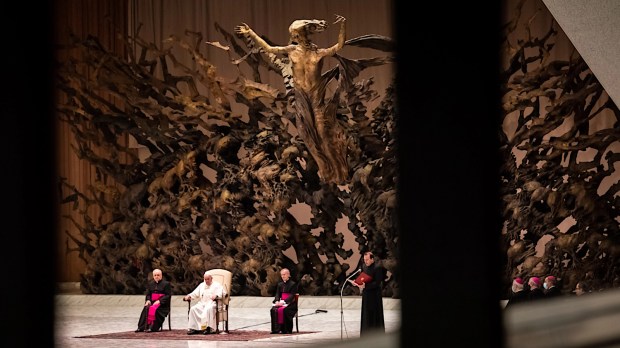Thursday, 1 September 2022
1. What is the Pontifical Academy for Life’s plan on contraception?
2. Pope’s visit to Kazakhstan should boost Church in Central Asia, says neo-Cardinal Marengo
3. The story behind the colossal statue of Jesus rising from nuclear destruction at the Vatican
~
What is the Pontifical Academy for Life’s plan on contraception?
Commenting on the controversy surrounding Archbishop Vincenzo Paglia’s words calling a 1978 law decriminalizing abortion a “pillar” of Italian “social life,” Catholic website The Pillar says that “this is not an ordinary moment for the Pontifical Academy for Life.”
The U.S. media outlet links this to the Pontifical Academy for Life’s promotion of a book titled “Theological Ethics of Life,” which “Paglia says is meant to ‘introduce a paradigm shift’ in the Church’s theological discussion of sexuality and contraception.”
Speculation is rife that Pope Francis may be preparing a new document addressing the Church’s teaching on the immorality of artificial contraception. But according to The Pillar‘s sources, the Pontifical Academy has launched a broader strategic initiative: theologians and scholars from the John Paul II Institute want to provoke “a response from the pope at the 2023 synod of bishops on synodality.”
The goal would be “to chip away at the affirmation of objective morality in Pope John Paul II’s Veritatis splendor” and finally see “a footnote, perhaps – that relativizes Humanae vitae to the realm of conscience.” A hypothesis that refers to the famous footnote of Amoris laetitia, in 2016. While all this may seem”conspiratorial,” The Pillar believes that the Pope has already weighed in on the emerging discussion, stating last month on his return flight from Canada that “dogma, morality, is always in a path of development, but development in the same direction.”
The Pillar, English
Pope’s visit to Kazakhstan should boost Church in Central Asia, says neo-Cardinal Marengo
“The visit of the Holy Father to this beautiful country with multi-confessionalism, I think, will certainly set a good example of fruitful cooperation for everyone,” says the neo-cardinal of Mongolia, Giorgio Marengo, regarding the imminent trip of Pope Francis to Kazakhstan, from September 13 to 15.
The 48-year-old apostolic prefect of Ulaanbaatar, the youngest member of the College of Cardinals, says he has high expectations for the visit. Hailing “the wonderful tradition of Kazakhstan to unite people and develop an awareness of the importance of peace, harmony and mutual respect in such a difficult time,” he hopes that the visit of the head of the Catholic Church will have “a positive impact on other countries in the region, including Mongolia, although we are a little far away.” He also hopes that it will be “a good example of how the Catholic Church stresses interreligious dialogue, in cooperation with people of different religions.”
The prelate also speaks of the challenges of mission work in a country where “becoming a Catholic is not considered something quite normal.” “One has to be very determined and courageous to make this life decision,” he said.
UCA News, English
The story behind the colossal statue of Jesus rising from nuclear destruction at the Vatican
Any pilgrim who has ever attended an audience with the Pope in Paul VI Hall at the Vatican has inevitably noticed it. The website of the Jesuit magazine America explains the presence of the strange bronze sculpture of measuring 66 feet by 23 feet by 10 feet, located behind the pontiff’s chair: “The sculptor Pericle Fazzini designed the piece, ‘The Resurrection,’ to represent Jesus ascending from the explosion of a nuclear bomb.”
This work of art was commissioned at the personal request of Paul VI in 1970 and was inaugurated in 1977. It bears witness to an “era of widespread fear of nuclear annihilation,” and is one of the strongest symbols of the Holy See’s commitment against nuclear weapons.
The statue is not uncontroversial, even beyond its aesthetic dimension. American anti-nuclear activist Martha Hennessy (a granddaughter of Dorothy day) wonders whether the sculpture really makes people “more aware of the horrors of nuclear annihilation” or actually contributes to a form of generalized desensitization on the subject. America reminds us that Pope Francis has left no room for interpretation recently, clearly deeming the possession of a nuclear arsenal “immoral.”
America, English.

